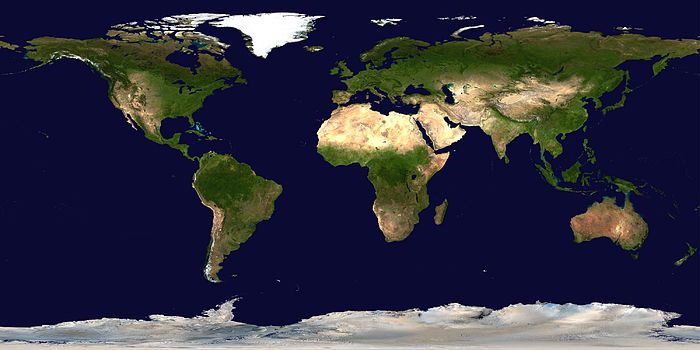(单词翻译:单击)
One geologist later described it as "probably the most significant paper in the earth sciences ever to be denied publication."
有一位地质学家后来把它描述成“很可能是有史以来被拒绝发表的最有意义的地球科学论文”。
At all events, mobile crust was an idea whose time had finally come. A symposium of many of the most important figures in the field was convened in London under the auspices of the Royal Society in 1964, and suddenly, it seemed, everyone was a convert. The Earth, the meeting agreed, was a mosaic of interconnected segments whose various stately jostlings accounted for much of the planet's surface behavior.
无论如何,提出地壳移动的观点的时刻终于来到了。1964年,该领域许多最重要的人物出席了由英国皇家学会在伦敦主办的研讨会。突然之间,好像人人都改变了观点。会议一致认为,地球是一幅由互相连接的断片组成的镶嵌画。它们挤挤搡搡的样子说明了地球表面的许多现象。
The name "continental drift" was fairly swiftly discarded when it was realized that the whole crust was in motion and not just the continents, but it took a while to settle on a name for the individual segments. At first people called them "crustal blocks" or sometimes "paving stones." Not until late 1968, with the publication of an article by three American seismologists in the Journal of Geophysical Research , did the segments receive the name by which they have since been known: plates. The same article called the new science plate tectonics.
过不多久,“大陆漂移”的名字便被弃之不用,因为人们意识到,在移动的不光是大陆,而是整个地壳。但是,过了一段时间才为那些断片确定了名字。起先,人们称其为“地壳积木”,有时候还称其为“铺路石”。直到1968年末,三名美国地震学家在《地球物理研究杂志》发表了一篇论文,那些断片才从此有了现在的名字:板块。同一篇文章称这种新断片为“板块构造”。
Old ideas die hard, and not everyone rushed to embrace the exciting new theory. Well into the 1970s, one of the most popular and influential geological textbooks, The Earth by the venerable Harold Jeffreys, strenuously insisted that plate tectonics was a physical impossibility, just as it had in the first edition way back in 1924.
旧的思想很难咽气,不是人人都马上接受那种激动人心的新理论。直到20世纪70年代,一本深受欢迎而又影响很大的、由德高望重的哈罗德·杰弗里斯撰写的地质学教材,还像1924年初版时那样,坚持认为板块构造学说在物理上不能成立。


